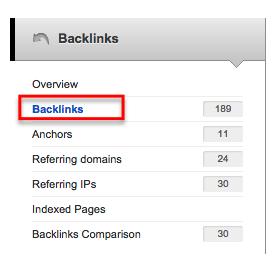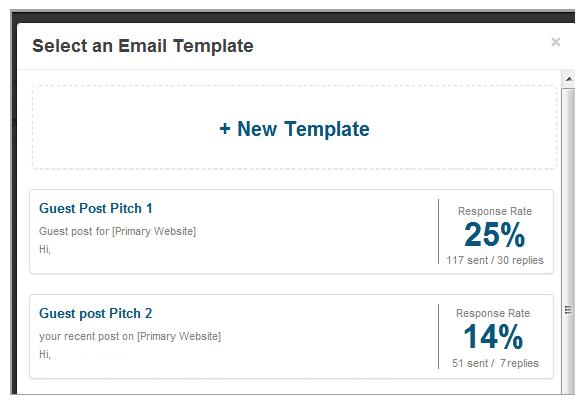
Quick & Easy Backlink Building In One Afternoon
Whether your site lands on the front or fifth page of a search depends many factors. Search engine algorithms account for relevant landing page keywords — but they also count the number of quality inbound links. Known as backlinks, these links can drive traffic to your site and improve your SEO. If you’re a small business or a startup– focus on getting quality backlinks to drive consistent traffic. Only quality will land you on the front page of Google (unless you’re practicing tactics that will get you penalized). On the first page of a search, the first 5 results account for 67.60% of all clicks. Results from 6 to 10 account for only 37.30% Clickthrough rates drop 30% between the second and third result alone.
CTR PERCENTAGES FOR SEO PAGE RANKINGS. CREDIT: MOZ
Aim to have your main landing pages ranking in the top 2 for your most profitable keywords in order to drive traffic. How can I get this done, you ask? You can get started using the simple strategy below in a single afternoon. I’ve successfully used it for my clients to increase their rankings and revenue over the years. Here’s a step-by-step guide-
Step 1 – Make a Plan
The first step is to optimize each page for just one keyword. This isn’t a post about keyword research, I trust that you’ve already got a process in place for that. If not, check this getting started guide from Moz. Using Adwords, determine which keywords to map to each landing page. A good rule of thumb is to choose keywords with low competition and high search volume, if possible. You also want to choose keywords that people are actually searching for, so use Google’s suggestion feature as a secondary source. That means, just googling and seeing what the drop down reveals. Even if they are low search volume, the long-tail phrases usually convert better and bring in more revenue over time. Google suggestions can also reveal opportunities that you hadn’t considered before, so bring them into Adwords to see what you’ve found. Choosing realistic keywords you can rank for and that will be relevant to your potential visitors is a good first step.
To get moving with your plan, answer these 3 questions:
What keyword will you map to each landing page?
The best thing you can do to build backlinks is to optimize landing pages for one main keyword, and use semantically relevant phrases in the page copy. Semantic Link is a great tool for automatically suggesting words and phrases that are related to your main keyword, and it’s free. Try using those words in your landing page copy.
You can also create an SEO On-PageOptimization spreadsheet. In fact, I highly recommend you start one now, even if you just have a few landing pages. Here is an example of how to start one:

The other columns to the right should include your H1’s, H2’s and other landing page elements. Your H1’s and H2’s are the headings in you page copy. Pro tip: get your keyword in your H1!
Which landing pages are most important to rank first?
Generally speaking, your home page & main category pages should be optimized first. It will always be easier to get your home page to rank because that is where the most page authority is on your site. Also, when you get press mentions or stories written about your brand, the referring site will link back to your home page unless they are citing a specific product , service or blog post. Build backlinks to the page that works best for your goals and move on to the next question.
Which page(s) on your site will be the easiest to work with?
You’ve made your plan and you have optimized the on-page elements for their respective keywords. Progress! Now to determine which page you have the best shot at getting backlinks to. For example, if you’re a florist and have to choose between working with your events page or your weddings page, look at which page has the most recent assets you can leverage. If you’ve got more photos of weddings you can use to promote your wedding page, choose the wedding page! Many bloggers and other authoritative publications accept editorial submissions, so always be on the lookout for those, they are gold in terms of backlink building. We get into outreach more in step 3.
Step 2 – Competitor Research
Simply stated: your competitors in organic search are those sites that are outranking you for your target keywords. Take the key phrase you discovered back in Step 1 while you were planning. Google that keyword to see what sites are already ranking for it – and which ones are in your ideal top 3 spots.
In order to keep your research free of personalized results (and get more accurate rankings), use Incognito Mode in Google Chrome:

I use Google Chrome, but if you use another browser use their “private” browsing function.
If you are a local business, and want to rank in local search/ Google Maps, use Search Tools under the Google Search Bar and click on the location arrow to the right. If your location isn’t in there, you can enter it and hit “Set.”

This will bring up ads, local results and then organic:

Step 3 – Backlinks Research
Now it’s time to go digging.
Choose from either the sites that are outranking you from the local results, the 3-selection “Snack Pack” as shown above, or from the organic results. I’d start with one type or the other at first, see what you find from those competitors, and move on to the next type of results. Choose one or two competitors from local and from organic to begin with for research.
After you have your competitor URL’s that are outranking you, place it in your backlink research tool of choice. I hope you have a paid tool to maximize the results, but if not, there are pro tools that offer free data up to a certain amount. Here are my favorite ones:
- SEMRush.com (11 backlinks per domain, free 14-day trial)
- Ahrefs (1 search per day. Up to 2500 tracked backlinks with free 14-day trial)
- Moz (3 free reports per day. Free 30-day trial)
I personally use SEMRush, so below are dashboards from within that tool. I highly recommend you try it out and see if there’s anything valuable in it for you.
First, go to Backlinks:

Type in the URL of your competitor who is outranking you:

Watch those backlinks roll in!

In SEMRush you can sort by Page Score to get the highest authority sites first. Then export those into a spreadsheet and go to each one on the list that looks like it could be a good fit.
Things to look for on the target site:
1. Do they have a blog?
2. Is the editorial contact info readily available?
3. What type of content did your competitor publish there?
All these things come in handy when you get ready to compose your outreach email, so you can propose something specific to the editor, and better than what your competitor has done.
Step 4 – Outreach
Outreach is more art than science. I have found there are either people who are really good at it and get responses, or people who totally suck and get their emails deleted. I like to think I’m in the category of the former, at least according to my clients.
Of course you need to know what sites to target from the competitor research you just did. Thankfully, there is at least one straightforward way to know if a site target is worth your time.
To find good outreach targets base your first pass on domain authority and use the Moz Toolbar. It can be installed in either Chrome or Firefox and gives you a ton of SEO-relevant information about your target landing page.

For backlink outreach, I use it to gather domain and page authority stats. Simply put Domain Authority predicts how well a site will rank in a search engine, while Page Authority predicts how well a specific page will rank in a search engine. If a competitor’s landing page has a higher page authority (shown as “PA” below) than your own landing page, then it’s a good indicator that they might be an outreach target and worth your time.
If your landing page is a PA:30 and the site you pull up in your research is a PA:10, it’s not likely a good backlinks match. But, there are some benefits to sites with a lower DA/PA score. If they’re reaching an audience that could be beneficial to you, than the exposure might make that site a worthwhile prospect. But you won’t know that unless you do your homework.
You can also try a tool like Buzzstream, which helps you find influencers in your space and their contact information. Here’s a screenshot of what the results look like:

You can download the whole thing as a CSV file, to make tracking your outreach that much easier. But, Buzzstream goes one step further and saves email templates for you. It saves their response rates, too, which takes all the guesswork out of your outreach.

While Buzzstream is a super helpful tool, it isn’t free. They do offer a 14-day free trial and a free slate of tools you can experiment with.

It’s comprehensive, and worth checking out.
Step 5 – Building The Links
In addition to locating sites to share your existing content, you can also build high quality backlinks by guest posting. Locating quality guest posting opportunities with natural anchor text in their backlinks is a lot of work, but there is a way to get the process started in a single afternoon. Don’t worry: you’re not spending hours writing batches of longform content; you’re looking for places to either post some of your richest content (as in the florist example), or places that will let you write short focused pieces. Either way, you need to be sure that the sites you pick welcome guest posts, and you can do that by some old-fashioned Googling with search queries like:
site:targetblog.com “guest post”
site:targetblog.com “post written by”
site:targetblog.com “guest author”
Once on your target URL, take the time to find the right email address to reach out to – don’t just email the first one you find! Finding the correct inbox – and editor’s email address rather than a contact form – can be all the difference between nabbing an opportunity and ending up in the trash. And be sure you’re targeting the right contact at your target – i.e., the editor of the blog rather than the CEO of the company. This step really is that crucial.
Now that you’ve got a list, reach out to a few targets per URL with an email that might look like this:
Make sure to customize this of course!
“Hi [first name],
I’m reaching out to discuss working together in a way that isn’t outright advertising but more editorial. We have a really special product that we think your customers would be interested in. I see an opportunity to share (example a) (with a story about). Let me know if you see any other opportunities to discuss? Here is the URL if you are interested in learning more about us.
xyzcompany.com
Looking forward to discussing possibilities!
Cheers,
(name)”
In my experience with linkbuilding, I have found that 2 times is the charm, but only send 3 emails total. People are busy and your link is not their priority, so YOU MUST FOLLOW UP. Follow up 2 days after initial email, and again the following week. There is no magic formula to making this happen, but linkbuilding is about being persistent, patient and polite!
Your second email can be a simple copy/paste with a friendly reminder at the top, like:
“Hey, just following up about below email I sent a couple of days ago. Looking forward to hearing back from you!”
This usually gets a response like “sorry, I’ve been busy…” and an ask for more ideas on how you think you can work together. Be sure to have some ideas ready!
The third email might be something like:
“Hey, I assume you’re not interested, but I wanted to reach out one last time, really hoping to hear back from you…here are a couple more ways I think we can work together…”
Keep in mind this outreach strategy is only as successful as your ability to determine a good match between yourself and the prospect. If there is no real benefit for the other site to link to you, they won’t. I can’t say it enough: Scope out your prospects wisely!
Recap!
Got all that? Here’s everything you can do in one afternoon to improve your site with backlinks:
- Optimize each landing page for 1 keyword. If you have content you can leverage with influencers, choose that page to build links to.
- Use the keyword you choose to research your competitors in the first 1-2 positions. Build a list of competitors from local and organic search results, and choose 1-2 from each.
- Put competitors into a backlink research tool and export their list of backlinks.
- Outreach to the sites that look like a potential fit. Follow-up!
- Rinse and repeat
Ultimately, I recommend you build a content strategy, but this post is more of a growth hack approach you can tackle in one sitting. You can even use it to help your ranking before your site is fully fleshed out with the content. As with anything, linkbuilding gets easier the more you do it, and your ability to spot opportunities increases with your confidence in writing prospecting emails. So get out there and try stuff!
If you have questions about any of the steps, I’m happy to answer them. Just send me an email or post them to the comments below.



